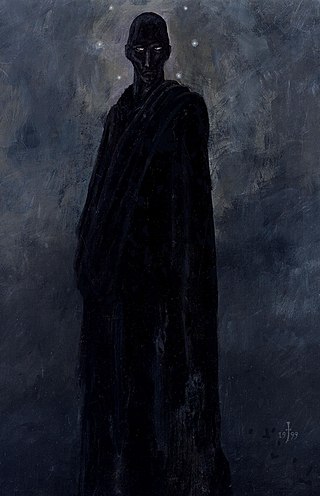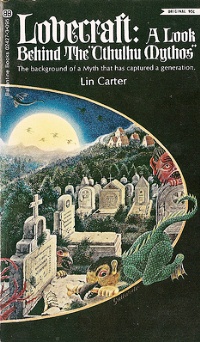- "Merlin on the Queens Express", by L. Sprague de Camp
- Dreams from R'lyeh: A Sonnet Cycle
- I. "Remembrances" (from Amra v. 2, no. 28, Jun. 1964)
- II. "Arkham" (from Amra v. 2, no. 28, Jun. 1964)
- III. "The Festival" (from Amra v. 2, no. 28, Jun. 1964)
- IV. "The Old Wood" (from Amra v. 2, no. 28, Jun. 1964)
- V. "The Locked Attic" (from Amra v. 2, no. 28, Jun. 1964)
- VI. "The Shunned Church" (from Amra v. 2, no. 28, Jun. 1964)
- VII. "The Last Ritual" (from Amra v. 2, no. 28, Jun. 1964)
- VIII. "The Library" (from Amra v. 2, no. 32, Mar. 1965)
- IX. "Black Thirst" (from The Arkham Collector no. 8, Win. 1971)
- X. "The Elder Age" (from Amra v. 2, no. 47, Aug. 1968)
- XI. "Lost R'lyeh" (from Amra v. 2, no. 39, Mar. 1966)
- XII. "Unknown Kadath" (from Amra v. 2, no. 39, Mar. 1966)
- XIII. "Abdul Alhazred" (from Amra v. 2, no. 39, Mar. 1966)
- XIV. "Hyperborea" (from Amra v. 2, no. 47, Aug. 1968)
- XV. "The Book of Eibon" (from Amra v. 2, no. 47, Aug. 1968)
- XVI. "Tsathoggua" (from Amra v. 2, no. 32, Mar. 1965)
- XVII. "Black Zimbabwe"
- XVIII. "The Return" (from Amra v. 2, no. 39, Mar. 1966)
- XIX. "The Sabbat" (from Fire and Sleet and Candlelight, 1961, and Amra v. 2, no. 32, Mar. 1965)
- XX. "Black Lotus" (from Amra v. 2, no. 32, Mar. 1965)
- XXI. "The Unspeakable" (from Amra v. 2, no. 32, Mar. 1965)
- XXII. "Carcosa" (from Fire and Sleet and Candlelight, 1961, and Amra v. 2, no. 32, Mar. 1965)
- XXIII. "The Candidate" (from Amra v. 2, no. 32, Mar. 1965)
- XXIV. "The Dream-Daemon" (from Fire and Sleet and Candlelight, 1961, and Amra v. 2, no. 39, Mar. 1966)
- XXV. "Dark Yuggoth" (from Fire and Sleet and Candlelight, 1961, and Amra v. 2, no. 39, Mar. 1966)
- XXVI. "The Silver Key" (from Amra v. 2, no. 39, Mar. 1966)
- XXVII. "The Peaks Beyond Throk" (from Amra v. 2, no. 47, Aug. 1968)
- XXVIII. "Spawn of the Black Goat" (from Amra v. 2, no. 47, Aug. 1968)
- XXIX. "Beyond" (from Amra v. 2, no. 47, Aug. 1968)
- XXX. "The Accursed" (from Amra v. 2, no. 47, Aug. 1968)
- XXXI. "The Million favored Ones" (from Amra v. 2, no. 47, Aug. 1968)
- Other Poems
- "Lunae Custodiens" (from Fire and Sleet and Candlelight, 1961)
- "Merlin, Enchanted"
- "To Clark Ashton Smith" (from The Arkham Collector no. 6, Win. 1970)
- "Once in Fabled Grandeur" (from Sandalwood and Jade, 1951, and Asmodeus, Spr. 1952)
- "The Night Kings" (from Sandalwood and Jade, 1951)
- "All Hallow's Eve" (from The Arkham Collector no. 7, Sum. 1970)
- "Shard" (from Sandalwood and Jade, 1951)
- "The Wind in the Rigging" (from Galleon of Dream, 1953)
- "Diombar's Song of the Last Battle" (from Amra v. 2, no. 40, Jun. 1966)
- "The Elf-King's Castle"
- "To Lord Dunsany" (from Sandalwood and Jade, 1951)
- "The Forgotten" (from Witchcraft & Sorcery #5, Jan./Feb. 1971)
- "Golden Age"
- "Lines Written to a Painting by Hannes Bok"
- "Death-Song of Conan the Cimmerian" (from The Howard Collector #17, Aut. 1972)
- "Author's Note"
|













